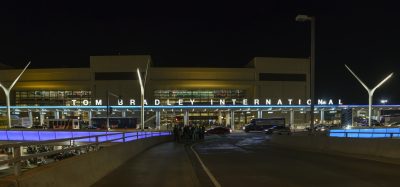Air travel volatility – three ways airports can beat the uncertainty
- Like
- Digg
- Del
- Tumblr
- VKontakte
- Buffer
- Love This
- Odnoklassniki
- Meneame
- Blogger
- Amazon
- Yahoo Mail
- Gmail
- AOL
- Newsvine
- HackerNews
- Evernote
- MySpace
- Mail.ru
- Viadeo
- Line
- Comments
- Yummly
- SMS
- Viber
- Telegram
- Subscribe
- Skype
- Facebook Messenger
- Kakao
- LiveJournal
- Yammer
- Edgar
- Fintel
- Mix
- Instapaper
- Copy Link
Posted: 9 June 2020 | Siobhan Boyle - Veovo | No comments yet
Despite the International Air Transport Association (IATA) warning that passenger demand will not fully recover until 2024, flight data consolidator OAG is reporting green shoots of recovery.


Travel lockdowns are easing in many regions, with over 60 airlines relaunching services in June 2020.
As air traffic ramps up, airports face daunting capacity planning challenges. Pre-COVID-19, operators adjusted capacity based on consistent demand patterns, backed by months and years of historical data. Even certain fluctuations – such as daily peaks, seasonal periods or the addition of new routes – were anticipated.
But, now, there’s uncertainty around just how many people will fly on any given day. Airports are grappling with how to keep operations running smoothly while dealing with three major issues – volatile flight schedules, load factors and passenger presentation profiles – at a time when they face significant budgetary and staffing restrictions.
Variable flight schedules
As governments reopen their borders, airlines are making noises about increasing capacity over the next couple of months. But exactly when and how routes will be scheduled remains unclear as carriers face tough choices around their future operations.
Scheduling decisions are expected to be wide-ranging. Some airlines may schedule flights as if nothing has happened. Others may schedule flights, only to cancel at the last minute, or make abrupt changes to the aircraft type and size. If post-9/11 and GFC recovery patterns are any indication, airlines will consolidate flights to peak times, meaning those slots will rebound to capacity the fastest. Off-peak demand, however, may take months or years to return to former levels. Gate allocations will also need to become considerably more dynamic.
Uncertain load
While some carriers may support onboard social distancing – leaving middle seats unoccupied – others may fill up cabins as restrictions are eased, making passenger load an uncertain planning factor. This load inconsistency, combined with already volatile schedules, leaves airports wondering how they can make accurate staffing and resourcing decisions to suitably match demand.
Compounding the issue are the changing processes around cabin bags, impacting check-in and baggage handling resources.
Unknown passenger presentation
Fear of crowded spaces will influence passenger show-up times and subsequent flow across the terminal. Travellers may arrive much earlier to try and avoid crowds or wait until the last moment to minimise time spent in the terminal. Such variables make it difficult to predict passenger presentations.
At the same time, airports will need to cope with possible increased processing times due to health checks or temperature screening, having a knock-on effect on flow across the terminal.
What can airports do?
With every day different from the day before, how can airports prepare when trying to predict the unpredictable? The answer lies in dynamic forecasting.
Traditional service and performance metrics, based on historical data, won’t apply until traffic nears pre-COVID-19 levels, meaning operators will need to find new ways to rapidly adapt. Dynamic, self-correcting forecasting allows operators to easily revise predictions, providing greater planning accuracy across check-in, security, border control, baggage and stand and gate allocations.
Here are three ways to flex operations with the help of dynamic forecasting:
1. Shift to live forecasting
Shortening the planning window has never been as important as it is now. Airports will need to shift from seasonal or monthly planning to a live, revised forecast – based on an interim COVID-19 baseline – to accurately predict turnarounds, presentation profiles, transfers and passenger journeys.
With machine learning automatically revising and improving forecasts every minute, operators can be confident that the most up-to-date data is incorporated in tactical planning. This includes airline booking data, approaching flight load data, latest arrival times, cancellations and delays.
2. Wrap in passenger behaviour understanding
Live forecasting can improve the ability to flex to varying loads and schedules. Combining it with per-flight passenger behaviour – when they show up and how they move – allows airports to adapt to changing presentation profiles and fine-tune capacity planning accuracy further.
For example, operators may receive updated flight schedules and booking data, and therefore know how many people will present at security. But what if some cautious individuals arrive much earlier than predicted? Or transferring passengers from particular flights show up at arrival filters late due to temperature checks after deplaning?
Only by integrating measured behaviour into forecasts can airports truly be confident in how they manage passenger throughput. With this level of detail, operators can also be more innovative in how they adjust resources in near real-time, such as by adapting shift breaks, changing lane openings or reallocating baggage carousels.
3. Make insight a shared responsibility
To support a successful recovery of traffic, it will be essential for airports, airlines, security agencies and other aviation partners to increase collaboration.
A decision-making model grounded in transparency will be the industry’s most powerful tool in coping with the new, more variable, normal. Early sharing of booking and transfer passenger data, traveller show-up and occupancy predictions will help ensure all parties can align service levels to fluctuating volumes. By working together, the industry can get people back in the air and improve confidence while avoiding over- or under-resourcing.
A dynamic new reality calls for dynamic planning
Predicting passenger arrivals is an essential part of any planning strategy, and it has never been more complex than it is now. Airports can only truly flex to current volatility with access to real-time data and machine-learning insights, to confidently anticipate and plan the days and hours ahead.
With forecasting enriched with live measurement and collaboration, teams can right-size their operations while balancing cost to get services back up and running smoothly – paving the way for a smarter, smoother, and safer new era of travel.
Related topics
COVID-19, Information technology (IT), Passenger experience and seamless travel, Terminal operations


















